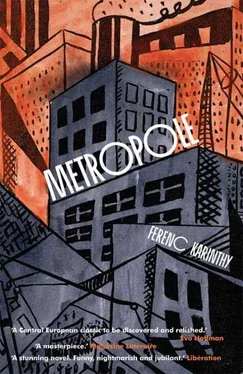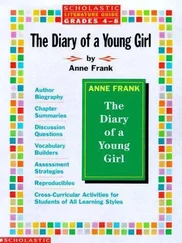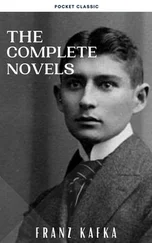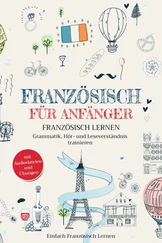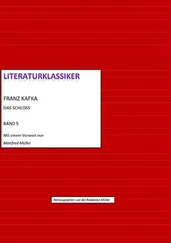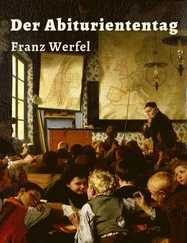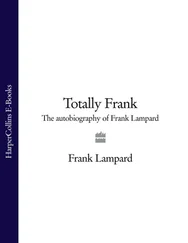This time Budai made an exception and did not try to work out what was happening. Even if he had known the language he would probably have made little sense of it: it was a private matter, hopeless and infinitely complex, completely alien as far as he was concerned. It was nothing to do with him and he felt no desire to know more. Thinking this, he picked himself up, broke through the people crowding at the entrance and left.
Once out in the street he looked back at the remarkable elevation of the building and it occurred to him that if it was really intended to be railway station then it was possible that various other city stations, some of them at any rate, might be located in the same quarter, maybe on the ring road as in Moscow — and if that were the case might there not be one that had not been redeveloped for some other purpose? It was, admittedly, a long shot but a possibility nonetheless and he couldn’t think of anything better. In any case he set off down the street in the direction he thought most promising, but the street soon led to a T-junction with a narrower street and he looked uncertainly right and left wondering which way to go. Or was it pointless hoping to discover a system? Might the railway stations be scattered randomly only to appear in the most unexpected places the way they did in Berlin, Paris and London? Was there perhaps one single major terminus through which most traffic was obliged to pass as in Amsterdam, Frankfurt and Rome? Or perhaps two, like Grand Central and Pennsylvania Station in New York?
He came to a square where a tall, wide church was crammed between ordinary houses, overlooking them. It looked like an ancient cathedral, an architectural monument with many towers and an enormous dome, complete with arches, buttresses, columns, balconies, friezes, statues, piers, ornamental masonry and other forms of decoration in such an eclectic welter of styles it was hard to tell when it was built, though it was likely to have been centuries ago as were most other cathedrals. There was a long queue comprised of people in pairs, at the main door, winding right round one of the aisles and disappearing. Having come so far, he felt, he should devote some time to this so he found the very back of the queue and joined it.
Pigeons strutted and spurted in dense flocks, impertinently pushing their way into the queue. Whenever they spotted anyone with breadcrumbs they did not wait for the crumbs to drop but grabbed them from people’s hands, settling on their shoulders and on the top of their heads, their wings beating the air, purring, rising in clouds and settling, dropping feathers and mess everywhere. Budai tried to start a conversation with an old lady wearing a fur collar just in front of him as she was feeding the birds but he must have been speaking too quietly or else she misheard him for she simply did not react but carried on dropping crumbs, cooing to the doves until they covered her completely. And he couldn’t even tell whether this great crowd was entering the church on a wave of religious enthusiasm or out of architectural curiosity.
When, after a long time — he no longer took note of how long anything took, his sense of time having been blunted — he finally reached the doors he hoped he might find a simple leaflet of the kind you’d normally find in places like this. But once through, the momentum of the thus far disciplined crowd suddenly swept him on, everyone dementedly rushing on to the various commercial stalls and salesmen stationed inside. There were oils, creams, and some suspicious-looking paste or plasticine for sale, mostly items connected with religion as far as he could make out, stuff required for local rituals as well as candles and incense, but no sign of a booklet or guide. People were pushing each other aside. Those who could grabbed a jar or little bottle and were immediately on their way back again, all knees and elbows. The sweet old woman who had been feeding the pigeons was now furiously kicking anyone who got in her way. Her worn fur collar had slipped off in the hand-to-hand struggle and was streaming behind her like a flag.
It was hard to make sense of this complex, heavily-decorated inner space so packed with believers and priests. Services were being conducted in various places, or that at least is what seemed to be indicated by the thicker knots of humanity gathered around gowned and capped figures who were busily intoning or singing. There were paintings, images, frescoes and mosaics covering the entire wall, as well as statues, stuccos, reliefs, baldachins, pulpits, booths, side chapels, arches, vaults, floors inlaid with marble, deep-piled carpets and heavy wrought-iron chandeliers everywhere, the lot in such rich profusion that he found it impossible to isolate any details. He tried to work out the dominant style in all the brilliant jumble but he didn’t entirely recognise any of them, no Romanesque, no Renaissance, no Baroque as such, though he couldn’t entirely rule out their influence. Not that he was any kind of expert. He couldn’t even identify the specific religion or myth that the various pictures, statues and ornaments represented: there were images of men and women, young and old, mostly in ancient monkish hoods, people in groups huddling together, hunting scenes, deer, fawn, dogs, a lion, standard bearers and archers, and a knight-in-armour tussling with a serpent. The images seemed to rush at him like a sudden assault on the eyes. Though the iconography was mysterious, one thing was certain: this was neither a Christian nor a Jewish place of worship for it lacked altars, crosses and Stars of David, nor could it have been an Islamic shrine since the Koran forbids images. But if he had wandered into some other kind of Eastern temple he would have expected to find seated Buddhas or a Shiva with its various arms… But now he was thinking of what wasn’t there, not what was. For all he knew there might have been other temples elsewhere just like this. The inscriptions on the wall and elsewhere were the usual runic, perhaps with more curlicues, a more archaic form of the script he saw everywhere. The language of liturgy might relate to living speech much as Church Latin did to Italian, or Old Slavonic to modern Russian.
The ritual itself was strange, rather barbaric. Budai joined one of the biggest groups near the entrance and saw that not far away a very large fat woman was lying on a sort of table covered with a roll of dark cloth. She was dressed in her best clothes and surrounded with flowers. She did not move. She was dead. Her large pink face might have been painted for the occasion; her neck and chin were as fat as the hand resting beside her body, a well-cushioned hand, plump and puffy, the gold rings on her fingers seeming to have grown into the flesh. The crowd who had come presumably to mourn the woman had, curiously enough, turned their backs on her and were listening to the priest who at that very moment was raising a large, rattling metal dish complete with chains — it looked rather like a teapot — his voice, as he did so, taking up a mournful chant. At this sign the faithful joined in wailing, lamenting, many of them throwing themselves against the stone floor with such power Budai thought they might break their heads open. They continued moaning and weeping like this, their lamentations rising into the vaults, echoing through the whole arena, blending with waves of litany from elsewhere. Some people were in tears. A thin woman in a black headscarf collapsed in a fit of sickness and had to be helped out through the crowd.
Boys in red surplices were fixing candles around the body of the dead woman though even now the crowd paid her no attention. They were staring at the priest who spread his arms wide so the sleeves of his gown rode up to his elbows. He shut his eyes and, his face transformed in ecstasy so that he looked almost lewd, cried out the same thing twice in a harsh, loud voice. Or maybe it wasn’t the same thing but two things that sounded similar, the two chiming like halves of a rhyming couplet, like this:
Читать дальше
